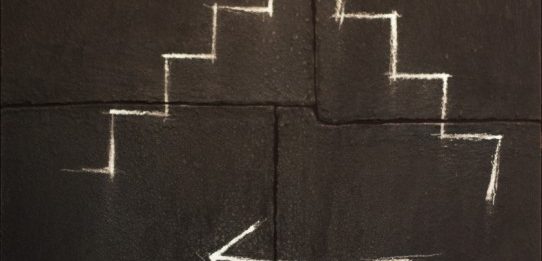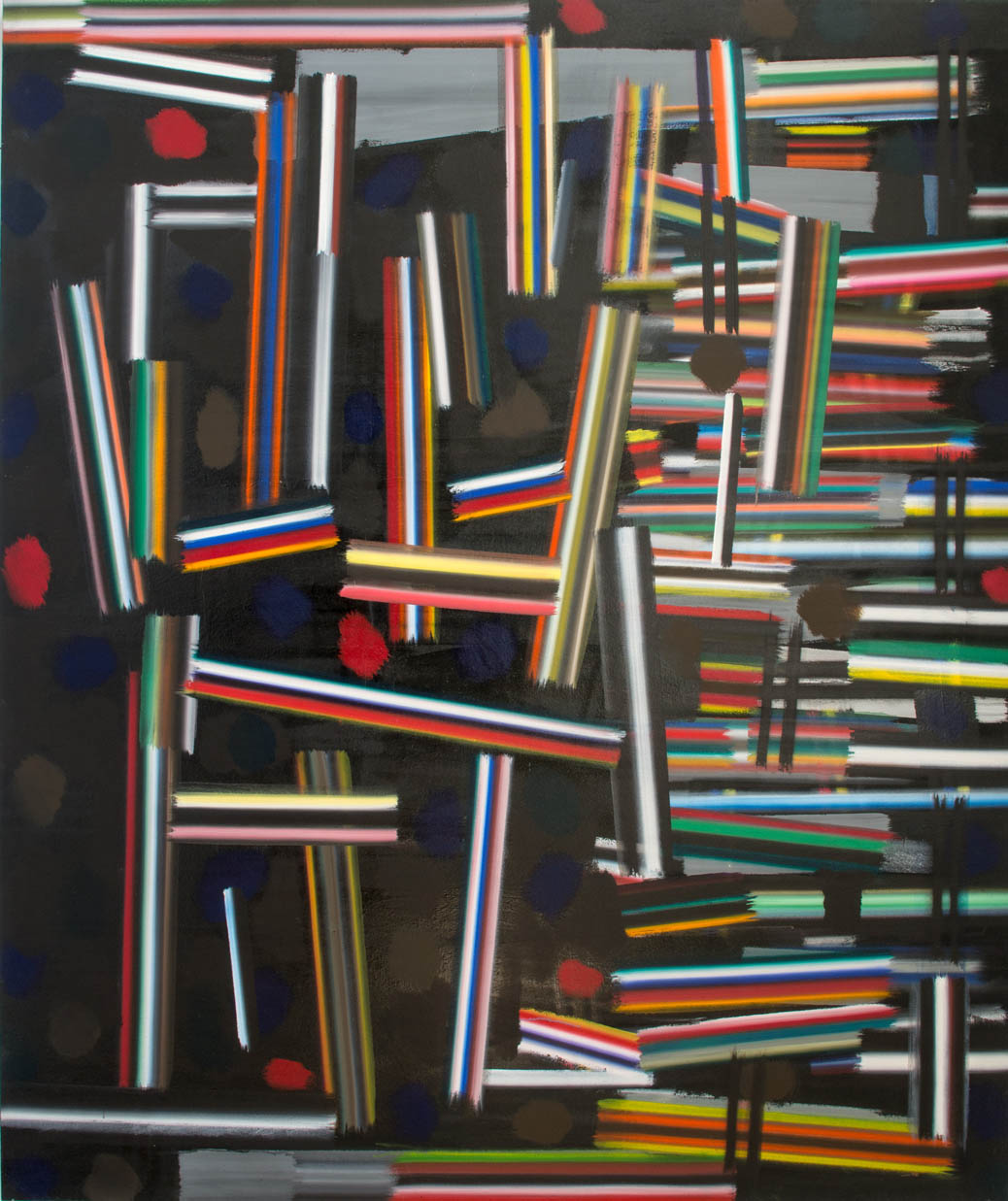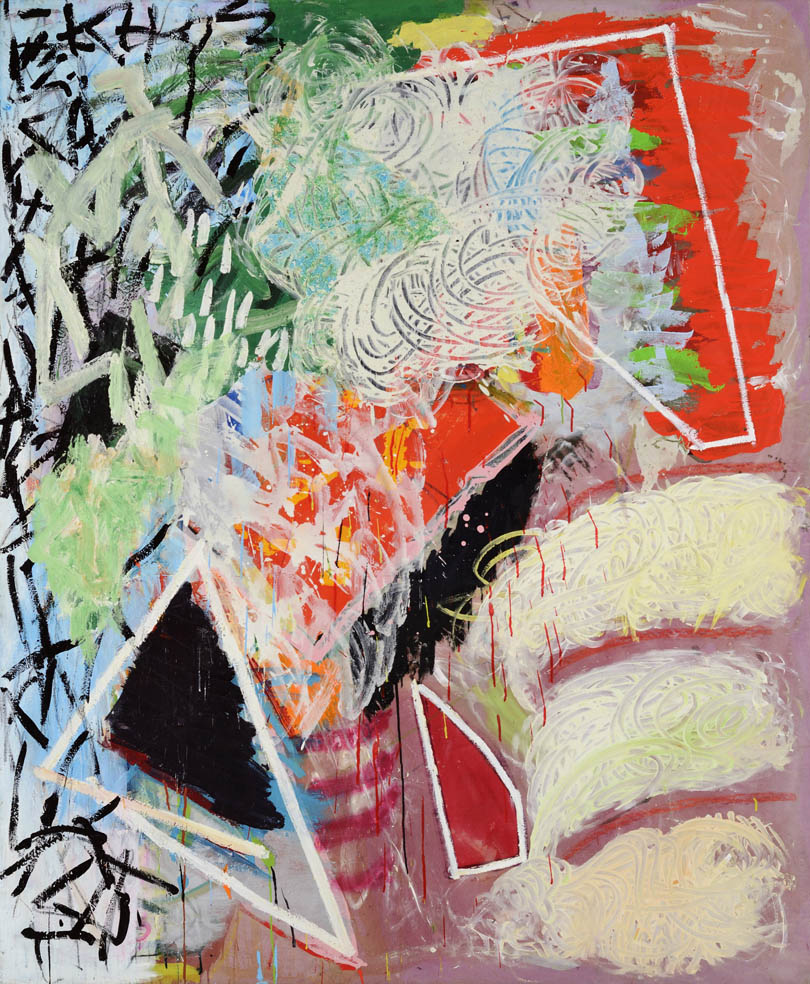John Middleton: Painting Works at the Coningsby Gallery, 9 -13 June 2014
Abstract art is, of course, all about perception. Almost always, the viewer sees the work through their own lens, and the resulting mental impression is, in effect, a collaboration between artist and observer. John Middleton’s show definitely gives the spectator a lot to absorb and think about; however there seem to me to be certain underlying themes to do with place, fluidity and possibility.
Doors are exciting, representing as they do the transition from one place to another. On entering the exhibition, the first picture to catch my eye was Doorway. With its central arrow, whose direction varied with your point of view, it seemed to say that our personal doorways can take us to many different places. Temple Doorway is another obvious example of the same theme. In a wonderful touch, the artist has used sand from a beach near the temple at Chichen-Itza to depict the building, yet it is the completely dark open doorway which draws the eye, suggesting the endless possibilities of the other side, and the journey from the physical to the spiritual which is evident throughout Middleton’s work. Nearby paintings complemented this idea. Path to the Temple suggests that either the rugged route or the direct path will lead you to the same destination, and Kimono, with its eye-catching gold square suggested a doorway filled with blindingly bright light.
Hanging side by side, The Pink Bird and The Green Bird were both inspired by Edward Lear. Strangely, although pink is a brighter colour, it was the latter which suggested Caribbean islands to me – perhaps because the bird was in flight, or maybe because green is the hue of vegetation and growth. Green is also a powerful colour in Idiosyncratic Pattern, which has shades of mother-of-pearl and has, to me, a 1970s feel, and asks the question “When is a pattern not a pattern?” This painting is also a good example of John’s fascination with flaws, rather than hiding them he likes to draw attention to them in an “X marks the spot” sort of way. The Last Sighting of Bigfoot deals wonderfully with the problem of making visible the invisible, while Henri’s Fish and Socks deceives the eye and plays with notions of depth and dimension.
Know Your Place seems to me to sum up the sense of myriad possibilities presented by this exhibition. Perhaps the empty space at the centre is for you; or you are one of the surrounding circles or even a small dot of colour right at the edge? The potentialities are endless as, I suspect, are the responses to John Middleton’s work – as varied as the works themselves. I have only touched briefly on the range of watercolours and drawings on display, but I found the whole to be impressive, engaging and stimulating.
For more information visit John’s website www.johnmiddleton.uk.com.





